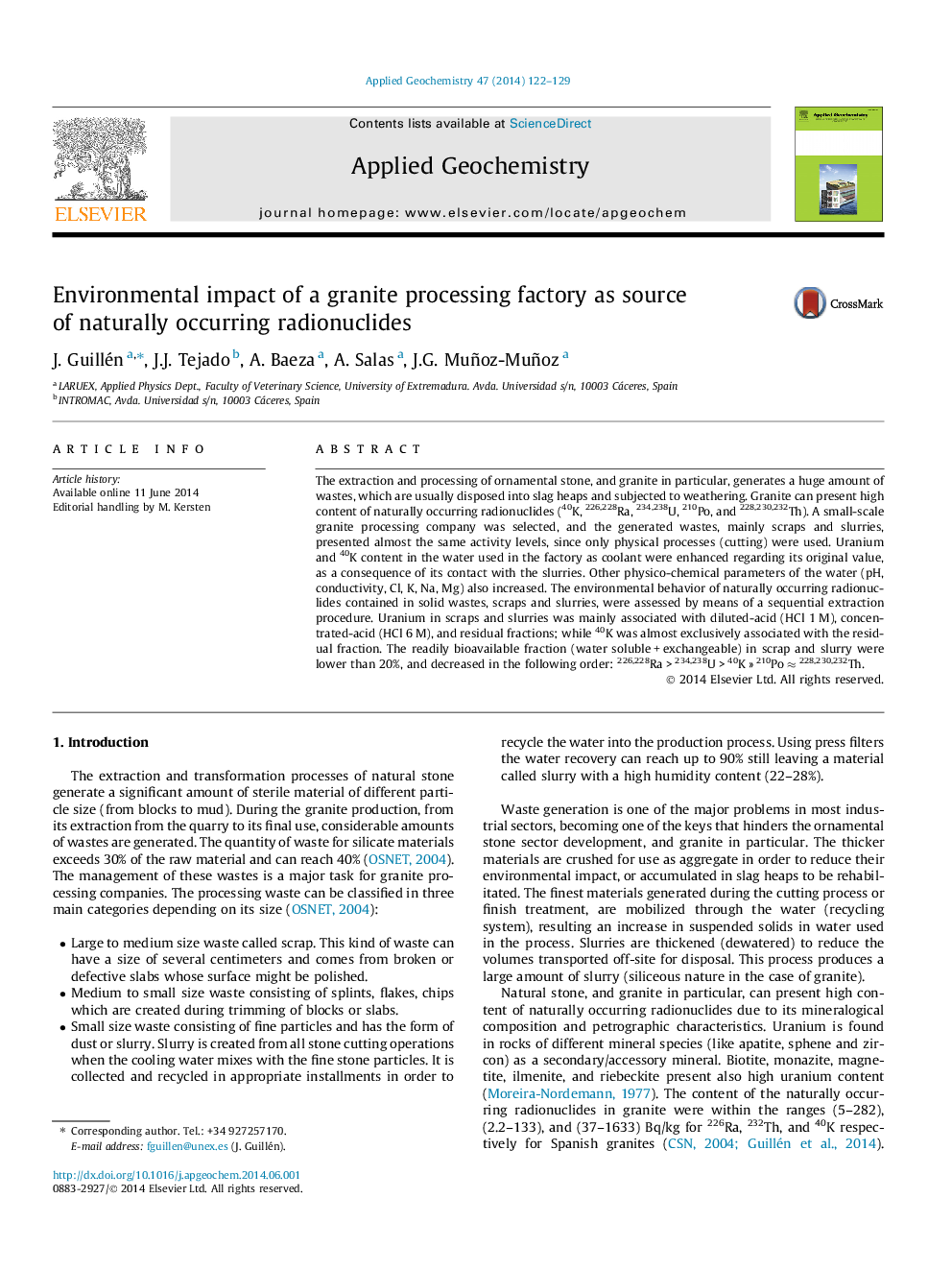| Article ID | Journal | Published Year | Pages | File Type |
|---|---|---|---|---|
| 4435744 | Applied Geochemistry | 2014 | 8 Pages |
•Industrial processing of granites can release naturally occurring radionuclides.•Wastewater used as coolant in the factory is enriched in U and 40K.•Bioavailability in solid wastes, scraps and slurry, decreased in the order: Ra > U > 40K » 210Po ≈ Th.
The extraction and processing of ornamental stone, and granite in particular, generates a huge amount of wastes, which are usually disposed into slag heaps and subjected to weathering. Granite can present high content of naturally occurring radionuclides (40K, 226,228Ra, 234,238U, 210Po, and 228,230,232Th). A small-scale granite processing company was selected, and the generated wastes, mainly scraps and slurries, presented almost the same activity levels, since only physical processes (cutting) were used. Uranium and 40K content in the water used in the factory as coolant were enhanced regarding its original value, as a consequence of its contact with the slurries. Other physico-chemical parameters of the water (pH, conductivity, Cl, K, Na, Mg) also increased. The environmental behavior of naturally occurring radionuclides contained in solid wastes, scraps and slurries, were assessed by means of a sequential extraction procedure. Uranium in scraps and slurries was mainly associated with diluted-acid (HCl 1 M), concentrated-acid (HCl 6 M), and residual fractions; while 40K was almost exclusively associated with the residual fraction. The readily bioavailable fraction (water soluble + exchangeable) in scrap and slurry were lower than 20%, and decreased in the following order: 226,228Ra > 234,238U > 40K » 210Po ≈ 228,230,232Th.
